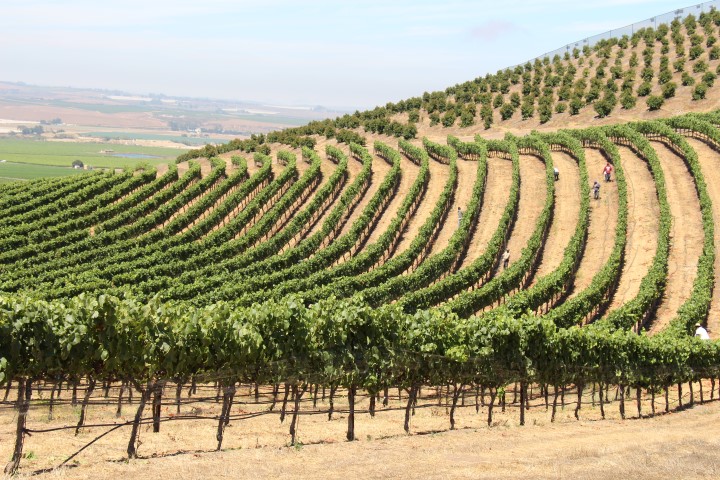April 21, 2017

California grape acreage (all types combined) fell 2.3 percent in 2016 compared to 2015, shriveled the most by a 7.5 percent decline in raisin vineyards.
The raisin decline in part is tied to growing foreign competition and higher California production costs, including labor. The increased conversion of grape ground to tree nut acreage in the San Joaquin Valley for increased profit potential is a reason for reductions in all grape-type acreage.
According to the National Agricultural Statistics Service (NASS), California all-grape acreage – wine, fresh market (table), and raisins - totaled 897,000 acres in 2016 (841,000 bearing acres and 56,000 non-bearing), down 21,000 acres from 2015’s 918,000 total acreage (856,000 bearing and 62,000 non-bearing).
Total raisin acreage was 172,000 total bearing acres and 2,000 non-bearing in 2016, compared to 184,000 bearing and no change in non-bearing in 2015.
The second largest grape acreage loss, but not by much compared to the third slot, was grapes for wine, a 1 percent reduction, with 602,000 total acres last year compared to 608,000 acres in 2015.
The wine grape acreage breakdown includes: 2016 (560,000 bearing and 42,000 non-bearing); and 2015 (no change in bearing acreage from the previous year, and 48,000 non-bearing).
In table grapes, California acreage fell .08 percent to 123,000 total acres in 2016, down 1,000 acres (124,000 total) in 2015. Last year, NASS says California had 111,000 bearing table grape acres and 12,000 non-bearing; compared to 2015 with 112,000 bearing and 12,000 non-bearing.
NASS reported 2016’s leading wine-type varieties were Chardonnay and Cabernet Sauvignon while Flame Seedless was the leading table-type variety.
On the raisin side, Thompson Seedless, as it has been for years, was the leading variety for use as raisins, plus for fresh market consumption, concentrate, and wine.
The full report is online at www.nass.usda.gov/ca.
You May Also Like




